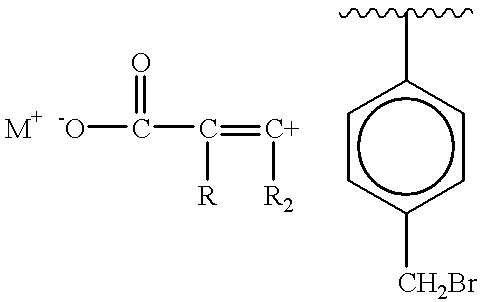A tpe composition that exhibits excellent adhesion to textile fibers-
a technology of thermoplastic elastomers and textile fibers, which is applied in the direction of adhesives, other rubber adhesives, textiles and paper, etc., can solve the problems of limited use of textile fibers, poor adhesion of polyolefins and thermoplastic elastomers rich in polyolefins, etc., and achieves increased stiffness, high modulus, and increased softening temperature of the composition
- Summary
- Abstract
- Description
- Claims
- Application Information
AI Technical Summary
Benefits of technology
Problems solved by technology
Method used
Image
Examples
Embodiment Construction
[0045] The results reported in Tables II-VI were prepared by melt blending the added components to a preformed thermoplastic vulcanizate described in Table I. The results in Table VII was a simple hot melt adhesive formed by melting a polyolefin and a functionalized polyolefin. The compositions in Tables VIII and IX were prepared by adding the functionalized polyolefin before crosslinking with a catalyzed hydrosilylation crosslinking agent.
[0046] Table I is a formulation for a generic thermoplastic vulcanizate. The thermoplastic vulcanizate is conventionally prepared as described in U.S. Pat. No. 4,130,535.
1TABLE I Thermoplastic Vulcanizate Parts by wt. wt. % EPDM rubber 100 30.7 Polypropylene 41 12.6 Stannous Chloride 1.3 0.4 Extender Oil 130 39.9 Clay 42 12.9 Zinc Oxide 2.0 0.6 Phenolic Resin 4.5 1.4 Wax 5.0 1.5 Total 325.8 100
[0047] Various commercially available functionalized polyolefins were added in various amounts to thermoplastic vulcanizate prepared according to the recipe...
PUM
| Property | Measurement | Unit |
|---|---|---|
| flexural modulus | aaaaa | aaaaa |
| flexural modulus | aaaaa | aaaaa |
| flexural modulus | aaaaa | aaaaa |
Abstract
Description
Claims
Application Information
 Login to View More
Login to View More - R&D
- Intellectual Property
- Life Sciences
- Materials
- Tech Scout
- Unparalleled Data Quality
- Higher Quality Content
- 60% Fewer Hallucinations
Browse by: Latest US Patents, China's latest patents, Technical Efficacy Thesaurus, Application Domain, Technology Topic, Popular Technical Reports.
© 2025 PatSnap. All rights reserved.Legal|Privacy policy|Modern Slavery Act Transparency Statement|Sitemap|About US| Contact US: help@patsnap.com



